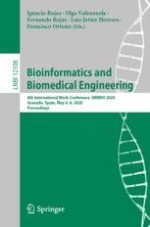2020 | OriginalPaper | Buchkapitel
Computational Approaches for Drug Design: A Focus on Drug Repurposing
verfasst von : Suyeon Kim, Ishwor Thapa, Farial Samadi, Hesham Ali
Erschienen in: Bioinformatics and Biomedical Engineering
Aktivieren Sie unsere intelligente Suche, um passende Fachinhalte oder Patente zu finden.
Wählen Sie Textabschnitte aus um mit Künstlicher Intelligenz passenden Patente zu finden. powered by
Markieren Sie Textabschnitte, um KI-gestützt weitere passende Inhalte zu finden. powered by
